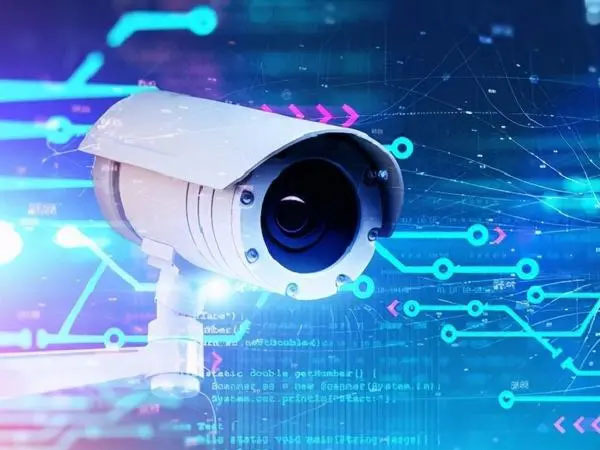What are the specific components of semiconductor packaging and testing equipment?
Release Time:
2022-05-17 17:08
With the development of technology, the density of transistors in semiconductor chips is getting higher and higher, and the complexity and integration of related products are increasing exponentially, which is an unprecedented challenge for chip design and development. On the other hand, with the shortening of the chip development cycle, the requirements for the success rate of tape-out are very high, and any failure is unbearable for enterprises. To this end, in the process of chip design and development, sufficient verification and testing are required. In addition, with the continuous improvement of semiconductor process technology, a large number of technical challenges need to be faced, and testing has become more important. So, what equipment is used in semiconductor packaging evaluation?
Specifically, the main semiconductor packaging and testing equipment includes:
(1) Thinning machine
Due to the requirements of the manufacturing process, high requirements are placed on the dimensional accuracy, geometric accuracy, surface cleanliness and surface microlattice structure of the wafer. Therefore, only wafers with a certain thickness can be used for transfer and tape-out in the process of hundreds of process flows. Usually, before the integrated circuit is packaged, it is necessary to remove a certain thickness of excess base material on the backside of the wafer. This process is called wafer backside thinning process, and the corresponding equipment is wafer thinning machine. The thinning machine thins the wafer substrate by thinning/grinding to improve the heat dissipation effect of the chip. Thinning to a certain thickness is beneficial to the later packaging process.
(2) Four probes
Measure opaque film thickness. Since the opaque film cannot be measured by optical principles, the sheet resistance is measured with a four-point probe instrument, and the film thickness is indirectly measured according to the relationship between the film thickness and the sheet resistance. Sheet resistance can be understood as the resistance between the two ends of the square film on the silicon wafer, which is related to the resistivity and thickness of the film, and has nothing to do with the size of the square film. Four probes contact the silicon wafer with four probes placed equidistantly on a straight line in turn, apply a known current between the two outer probes, and measure the potential difference between the inner two probes at the same time , from which the sheet resistance value can be obtained.
(3) Dicing machine
The dicing machine includes two types of grinding wheel dicing machine and laser dicing machine. Among them, the grinding wheel dicing machine is a precision numerical control equipment that integrates the technologies of water, gas, electricity, air static pressure high-speed spindle, precision mechanical transmission, sensors and automatic control. Mainly used for dicing and processing of silicon integrated circuits, light-emitting diodes, lithium niobate, piezoelectric ceramics, gallium arsenide, sapphire, alumina, iron oxide, quartz, glass, ceramics, solar cells and other materials. The grinding wheel dicing machine is also called the precision grinding wheel cutting machine in China.
The laser dicing machine uses a high-energy laser beam to irradiate the surface of the workpiece, so that the irradiated area is partially melted and vaporized, so as to achieve the purpose of dicing. Because the laser is focused by a special optical system to become a very small spot, the energy density is high, and because the processing is non-contact, there is no mechanical punching force on the workpiece itself, and the workpiece is not easily deformed. The thermal influence is extremely small and the scribing accuracy is high. It is widely used in the cutting and scribing of solar panels and thin metal sheets.
(4) Testing machine
The tester is a special device for testing the function and performance of the chip. During the test, the tester applies an input signal to the chip to be tested, and the obtained output signal is compared with the expected value to judge the electrical performance of the chip and the effectiveness of the product function. In the CP and FT testing links, the testing machine transmits the results to the probe station and the sorter respectively. When the probe station receives the test results, an inkjet operation is performed to mark the defective chips on the wafer; when the sorter receives the results from the tester, the chips are selected and sorted.
(5) Sorter
The sorting equipment is used in the FT test link after chip packaging. It is a back-end test equipment that provides chip screening and classification functions. The sorting machine is responsible for transporting the input chips to the test module according to the pick-and-place method designed by the system to complete the circuit pressure test. In this step, the sorting machine selects and classifies the circuits according to the test results. Sorters can be divided into three categories according to the system structure, namely Gravity sorters, Turret sorters, and Pick and Place sorters.
Jinyu semiconductor granulation workshop
The importance of packaging and testing is mainly reflected in that it is the last check process in the production process of semiconductor chips. The semiconductor production process is as follows: wafer manufacturing, wafer testing, chip packaging, and finally packaging and testing. While every step in production is checked, packaging and testing is the final standard that can be put into use, so packaging and testing become particularly important. As a self-produced and self-sold semiconductor company, Jinyu Semiconductor has specialized packaging and testing services, and provides one-stop application solutions and on-site technical support services for packaging and testing to the outside world.
These semiconductor devices are the key supporting links in the industry chain of the semiconductor industry and are the technological pioneers of the semiconductor industry. Every step in the production needs to be designed and manufactured within the scope allowed by the equipment technology, and the technological progress of the equipment in turn promotes the semiconductor industry. industry development.
Latest News
2022-05-17
LED packaging structure, process development status and trend
LED packaging is a technology involving multiple disciplines (such as optics, thermals, mechanics, electricity, mechanics, materials, semiconductors, etc.). (As shown in Figure 1) From a certain point of view, LED packaging is not only a manufacturing technology (Technology), but also a basic science (Science), excellent packaging engineers need to understand thermal, optical, material and process mechanics Have a deep understanding of the nature of physics.
Read More →2022-05-17
From chip to package to terminal, interpret the development status of UVC LED
In the past two years, affected by the global economic downturn and geopolitical conflicts, the growth rate of the global LED lighting market has slowed down significantly.
Read More →2022-05-17
LED packaging form and packaging process
LED chip types are mainly divided into three categories from a structural point of view: horizontal electrode chips, flip chips and vertical electrode chips.
Read More →Tel: +86-519-89806999
Fax: 86-519-86523668
Address: No.98 Wunan Middle Road ,Wujin, Changzhou,Jiangsu ,China
E-mail: amicc@amicc.com
Web: http://www.amicc.com
SupplierIn Quiries →
Copyright © 2022 Jiangsu AMICC Optoelectronics Technology Co., Ltd. Powered by www.300.cn 苏ICP备*********号-1




